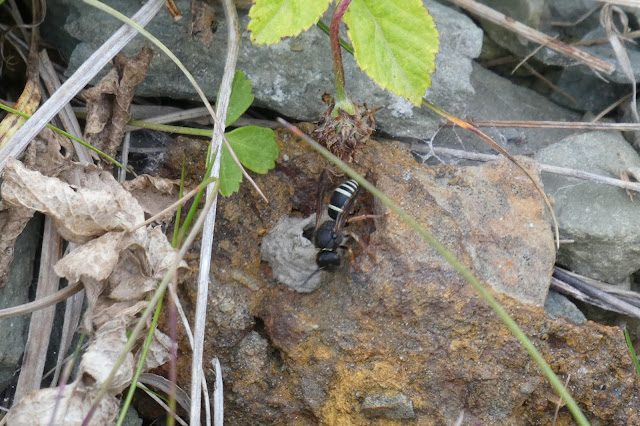As alluded to at the end of the previous post, there was so much insect activity to see (amongst other senses...) whilst wandering about Stanger Head on the island of Flotta, that a second post was deemed a necessity.
The target species chosen by our walk leader, Helen, was the Six-spot Burnet, a day-flying moth which is on the wing at this time of year. Whilst widespread in England, Wales and Northern Ireland, and spreading through Scotland, here in Orkney, this is its only known site. Reason enough then for a pilgrimage to see it, and that's before we consider how it looks to the human eye, a visual treat of glossy, dark bluish blacks and stunning reds.
Of course, to other animals who might consider the moth as prey, those colours are a warning sign, as the adult and caterpillar contain hydrogen cyanide, rendering them unpalatable or poisonous in sufficient quantity. Some of our group did try sniffing a moth, with the female contingent having more success than the male one at detecting the bitter smell.
 |
| A caterpillar of the Six-spot Burnet |
 |
| The empty cocoon and exuvia of an emerged adult moth |
 |
| An adult Six-spot Burnet on a thistle head (one of its nectar sources) |
 |
| Six-spot Burnets mating (double domino cabaret coupling) |
Whilst searching for the empty cocoons, I found myself staring at this weedy pile of rubble (the site is an old quarry, dotted with wartime infrastructure). My eye was drawn to something just in the centre of the photo, below that pale green leaf, on a small brown rock...
We have no time to stand and stare?"



We have the Burnett moths in Lincolnshire but they're not easy to find, very similar to the Cinibar moth which seems to be popping up all over the place.
ReplyDeleteI distantly remember some species of Burnet moth from my childhood in the north east of England. There was a colony along a nearby railway embankment where Knapweed proliferated.
Delete